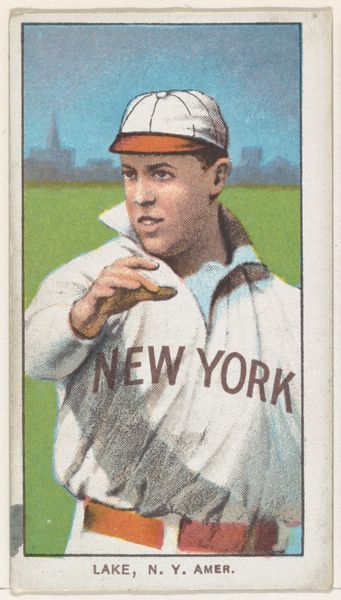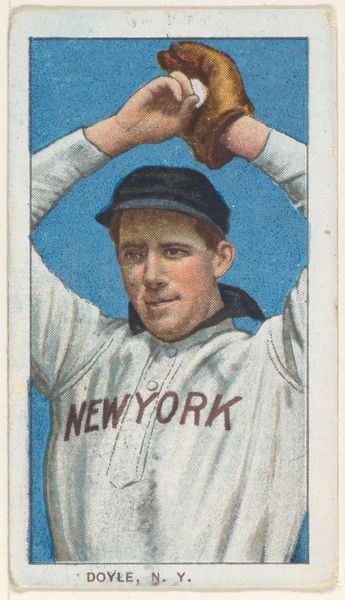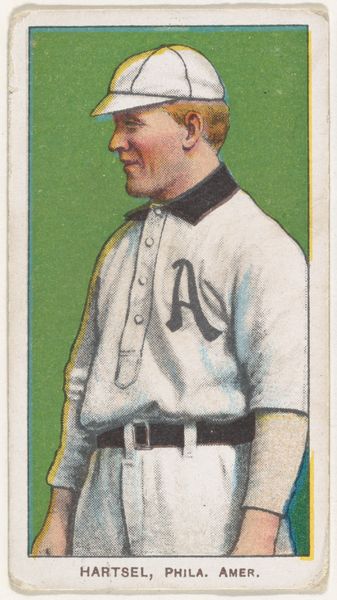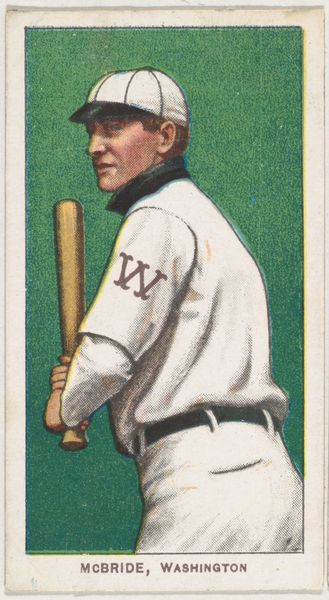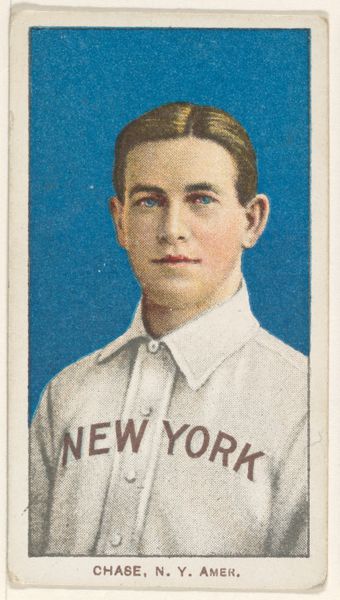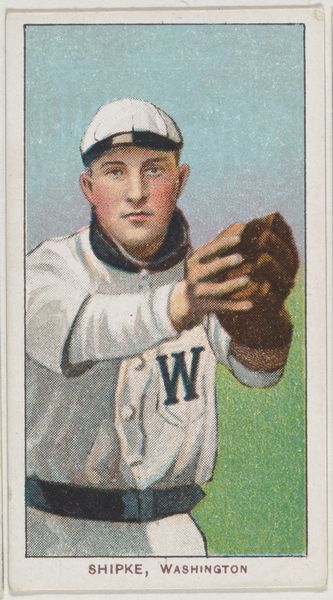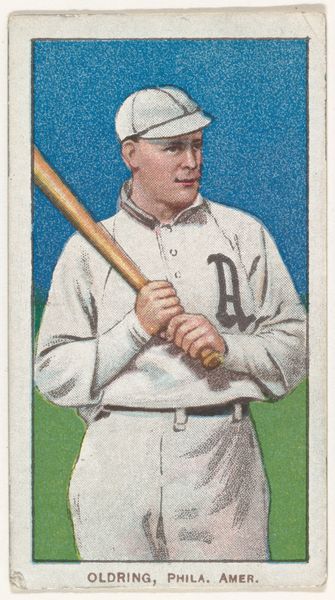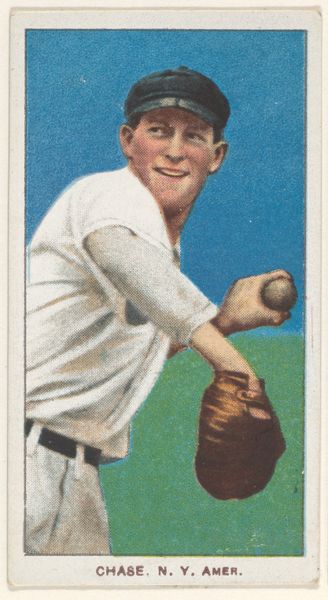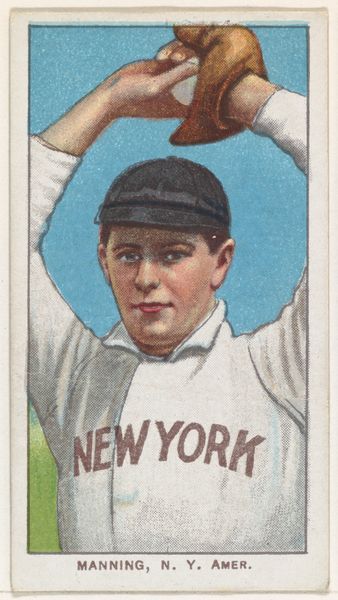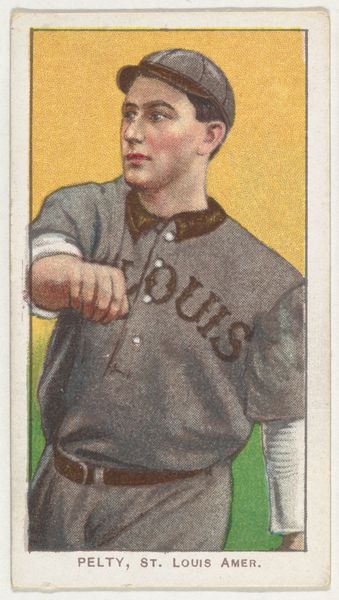
Quinn, New York, American League, from the White Border series (T206) for the American Tobacco Company 1909 - 1911
0:00
0:00
drawing, mixed-media, print, photography
#
portrait
#
drawing
#
mixed-media
# print
#
photography
Dimensions: Sheet: 2 5/8 x 1 7/16 in. (6.7 x 3.7 cm)
Copyright: Public Domain
Curator: Here we have "Quinn, New York, American League," a baseball card dating from 1909 to 1911. It was part of the White Border series (T206) issued by the American Tobacco Company. What's your initial take? Editor: It's a small format—a kind of pre-digital collectible. What strikes me is how tactile the printing appears, especially given it comes from something mass-produced like cigarette packs. The labor in the making of these early commercial images fascinates me. Curator: Yes, the card's surface indeed possesses a palpable quality, with the layered tones generating considerable depth despite the relatively muted palette. It possesses a charm with its portrait-style composition; his gaze almost creates a visual vector. Editor: Absolutely, it speaks to the means of its production—layered impressions no doubt. But look at that type— stark and almost stamped onto the surface, anchoring Quinn's image within the framework of capital. A little treasure amidst tobacco. Curator: Note, too, how the American Tobacco Company deftly employs this composition and framing to elevate what is essentially a commercial product into something akin to folk art. The visual rhetoric is fairly compelling. Editor: Folk art indeed. I am particularly drawn to how this card exists within the cultural context of early baseball, amidst growing industries that produced consumer goods—baseball cards were promotional materials using photographs. Curator: Consider the white border's function. Ostensibly, it simply frames the image. However, it paradoxically isolates the figure, creating a space of contemplation—of the individual, the team, and perhaps the aspirations of the era. Editor: For me it raises fascinating questions about consumption, leisure, and fandom during the turn of the century. Who kept these? Where? What did Quinn represent beyond the game? This one survives, reminding us how it played within society. Curator: Agreed. The visual interplay of figure and ground is simple, yet incredibly effective in its construction. Editor: Thinking of Quinn, I realize this fragile piece represents entire economies rooted in physical making, in tangible objects. These were traded and consumed—now it offers us such insight to how labor can come together into an image to create culture. Curator: A confluence, indeed.
Comments
No comments
Be the first to comment and join the conversation on the ultimate creative platform.
